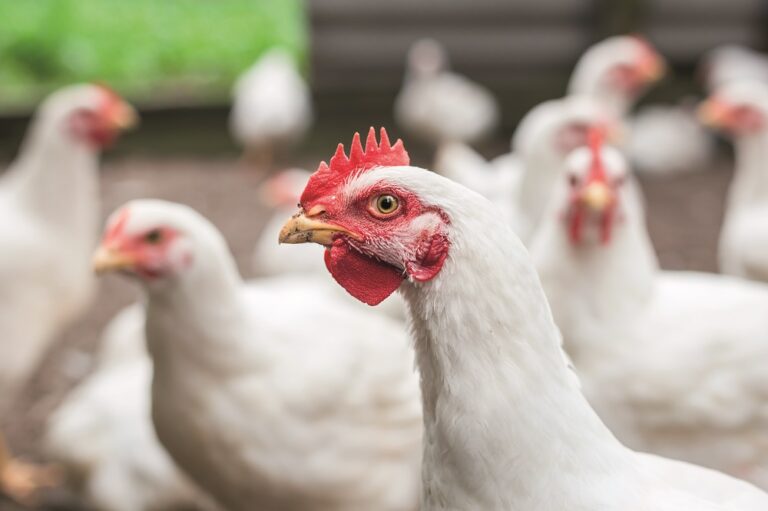Despite recent technological advances, mycotoxins are still one of the biggest issues in modern poultry farming, according to Wyreside.
This article first appeared in the Poultry Health supplement published in August’s issue of Poultry Business
The lack of accurate evaluation tools for the real mycotoxin impact on animals leaves the producer with doubts. However, the introduction of biomarker analysis at industrial level has enabled, the precise measurement of the mycotoxin systemic exposure and its impact on animal performance and health.
A combined feed and blood analyses
For the first time it is possible to achieve what the scientific community, for a long time, theorised as the best method to correctly assess the true exposure of animals to mycotoxins. By detecting them and their metabolites in bodily fluids, in this case blood. Innovad has validated and patented a method to currently determine 36 different mycotoxin biomarkers in blood using the so-called FTA cards. The cards offer a simple means to easily collect blood spots and dispatch them to our lab for analysis without restrictions.
Biomarkers discovered real risk
The feed mycotoxin analysis combined with blood analysis, provides a more complete overview of the overall mycotoxin risk. Already, a few months after launching the service, more than 3,000 blood samples from birds around the world have been analysed. The considerable volume of analytes tested has enabled an unprecedented reliable assessment of actual mycotoxin exposure on farms. The findings demonstrate that current practices for detecting mycotoxin risk in feed alone are not up to the task. Firstly, a mycotoxin risk was identified in all the studied farms when blood analysis was added whereby, 50% of farms were co-exposed to six or more mycotoxins. Secondly, a higher number of mycotoxins was detected in blood than in feed, which reveals the greater ability of the former to better detect the true exposure of mycotoxins. Additionally, in most cases (82%) blood analysis uncovered a mycotoxin risk ignored in the feed and which would have otherwise been missed if feed alone was analysed. It is also worth stressing that the emerging mycotoxins produced by Alternaria (like tenuazonic acid) and Fusarium (enniatins and beauvericin) were the most prevalent mycotoxins detected in blood.
Evaluating detoxifier capacity
The Myco-Marker service on >3,000 poultry animals confirmed that farms around the world are continually exposed to several mycotoxins simultaneously, causing economical losses. Until now, the use of mycotoxin binders has been the most common mitigation practice on farm, but their efficacy has been evaluated only through a simple in vitro binding test. However, as the European Food Safety Agency has concluded, such simple tests performed “in the glass” do not sufficiently mimic the conditions in the digestive tract and cannot be used to demonstrate efficacy under practical conditions. State of art mycotoxin biomarker research with the University of Gent in Belgium revealed the in vivo detoxification efficacy of Escent S in chickens under multi-mycotoxin exposure scenarios.
Efficacy under real farm conditions
However, it was indispensable to test the detoxifier technology in real farming conditions across all species, where the animals are simultaneously confronted to several stress factors, like climatic conditions, low quality of feed, vaccinations, etc. The Myco-Marker tool was deployed alongside overall performance as well as and clinical symptoms. The analyses revealed that systemic mycotoxin levels were widely reduced (or even completely removed) when animals were treated with the feed additive for a few weeks. In one of the biggest global egg producers, while initially seven different mycotoxins were detected in blood, only 1 mycotoxin (tenuazonic acid at trace level) was detected after few weeks of treatment usage. This was also accompanied by 5% egg performance improvement and reduction of clinical symptoms like vomits and liver rupture. The findings from all field studies across species confirm unequivocally the solution drastically reduces systemic exposure to mycotoxins where it is really needed, that is, in the real-world environment
Biomonitoring to optimise your mitigation strategy
The combination of the diagnostic tool with the detoxifier offers the producer the innovative RISE biomonitoring program. The program follows a four-tier approach:
- Risk: quantification of the true mycotoxin risk combining raw materials, feed and blood analysis
- Impact: reveal the direct impact of mycotoxins on animal performance and health, specific to the farm
- Strategy: optimize the mitigation strategy by proceeding to a fully informed decision regarding the optimum application of the scientifically proven detoxifier technology
- Evaluation: measure the effectiveness of the mitigation strategy
In the last year and a half, producers from all farming species have implemented the biomonitoring program and succeeded to manage the mycotoxin related stress with the help of the detoxifier technology.
In conclusion, mycotoxin biomarker analysis is an essential step forward in mycotoxin stress management plans, as for the first time it measures, the true mycotoxin risk, and the efficacy of mitigation strategies. The comprehensive biomonitoring program provides the producer the ability to quantify the real benefit and ROI of the detoxifier technology specifically for his own farm, in relation to animal performance and health. And of course, save hundreds of thousands or millions.


